The age of features is over. Competing products, Aral Balkan argues, have feature parity today. It’s not features that differentiate products now, it’s the experience. That’s why the best designs are winning the most business. Balkan’s talk, "Superheroes and Villains in Design" at the Thinking Digital 2013 conference in the UK, walks through ways businesses and product teams can succeed in the design game and win business.
Balkan is an experience designer and proven entrepreneur currently leading the team building Indie Phone, a new system that promises to give users complete control of the data they generate constantly.
Design is About Experiences, Not Aesthetics
In his talk, Balkan tells a story that helps to get one’s head straight before digging into a conversation about design. He fires back at the people who see design as the work of making products pretty. For example, he says, if one person asked another to design a car, and they painted a really pretty picture of a car, no one would call that a design.
"(Design) is not about drawing pretty pictures," he says. "We always focus on the aesthetics of design because they’re so visible. It’s not about that."
A design shows how a thing works. Even more than that, a design works in a way that solves a problem. Ideally, it solves a problem for its user (not a problem for the company that sells it to them).
Focus on the Customer’s Problem
Businesses often make the mistake of designing based on what they want out of a customer and not designing around the problem the customer has come to their business to solve.
He illustrates this with the case of two different transit systems with stations that face effectively the same ticketing condition. Both are stations in which you get onto a train that goes to just one place. The first is in Stockholm, whose station has a very complicated machine.
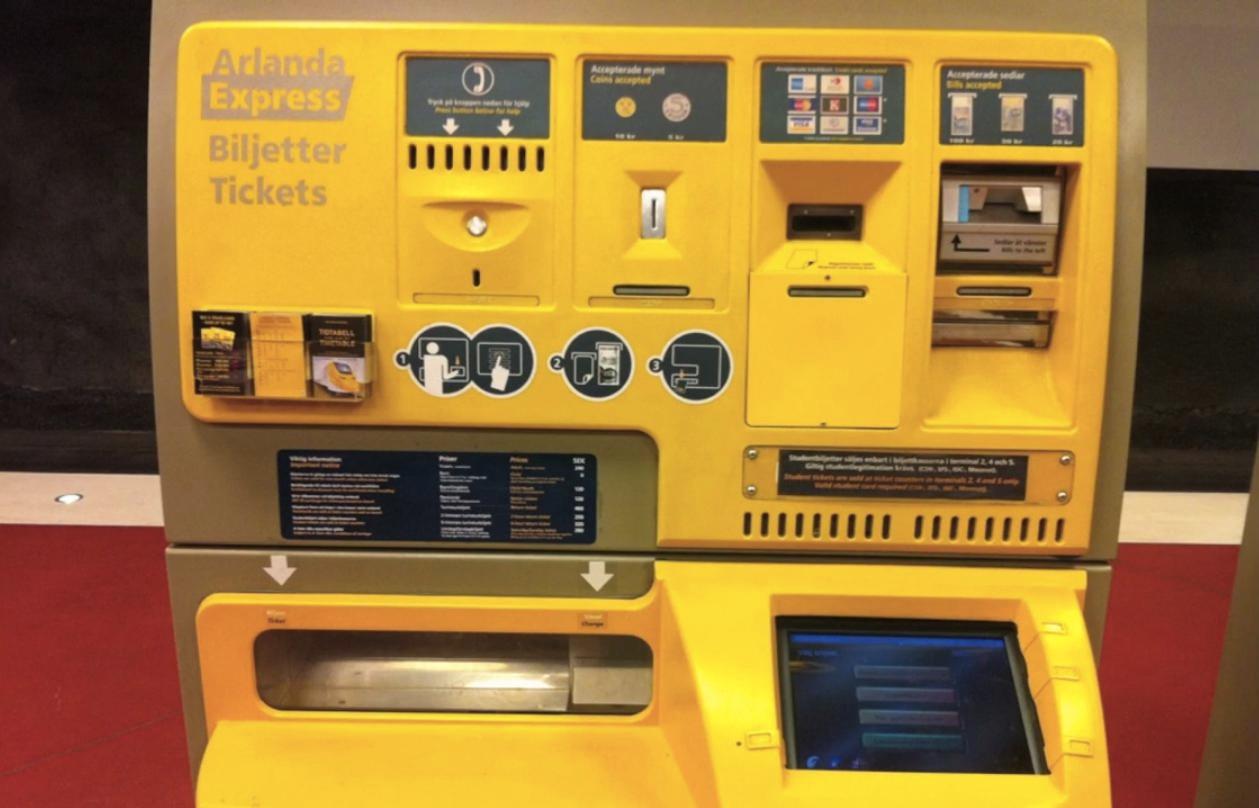
"The people who designed this knew that there was something wrong because they built a telephone into it," Balkan says.
That’s a machine built to solve the system’s problem of making sure its riders pay their fare.
The Oslo machine, on the other hand, is one in which you simply swipe your credit card to enter and you swipe your card again as you leave the station at your destination. Two swipes. No choices to make. No keys to press. No "start" button. There’s not even a ticket involved.
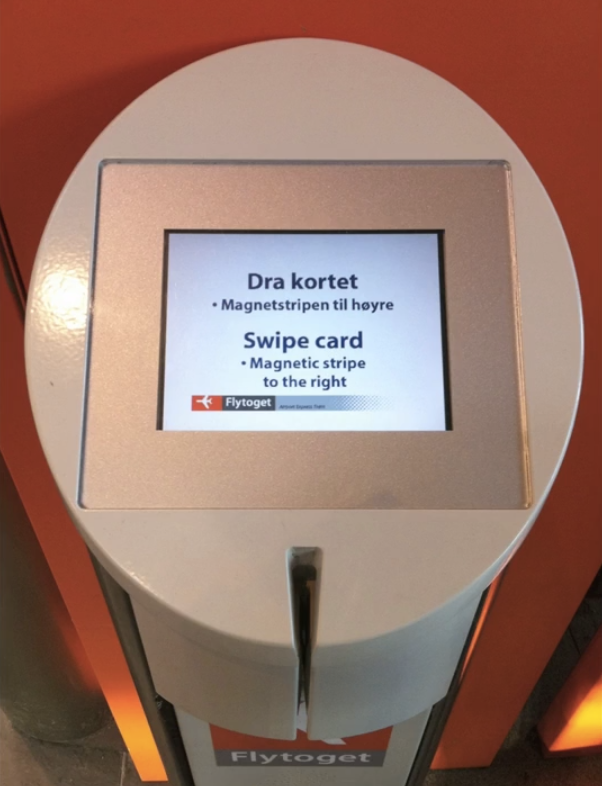
As simple as that sounds, Balkan emphasizes something profound that you might not immediately notice about the Oslo machine. He prefaces it by saying, "Great design is about saying no, no, no. Even when it’s painful, and I would argue that it’s most important especially when it’s painful." So here’s a painful decision that the experience designers in Oslo made: riders are not asked for their PIN codes.
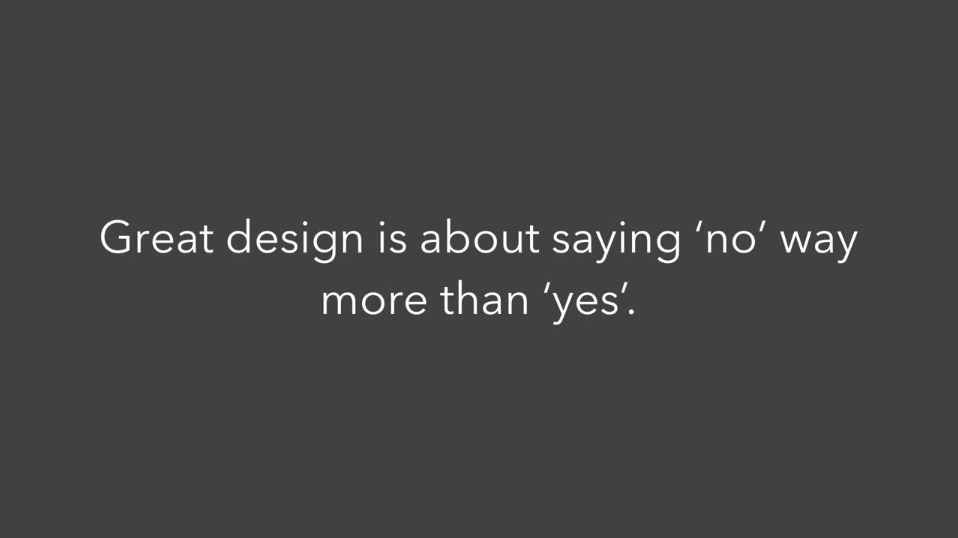
The designers decided to remove the PIN code feature even though they knew that without entering a PIN code the system would get a certain number of fraudulent charges each year (stolen credit cards, cloned cards, etc.) and they would just have to eat those charges because they did not ask their customers to verify their identity by entering a PIN.
In other words, the designers in Oslo thought about their users needs: users need to catch a train. Many of them are probably arriving barely on time to catch that train. Entering a PIN could slow them down just enough to miss it.
Is the extra security worth it to slow down thousands of riders because a small percentage of them will take advantage?
It’s a question teams in a similar situation might not even entertain. It requires sacrificing their own goals to accommodate the convenience of their customer.
Make the User Feel Like a Superhero
At the start of his talk Balkan talks about how we come into this world as babies who can’t do anything, but we’re surrounded by these people (grownups) who can do everything. As babies, grownups seem like superheroes. They seem to have supernatural abilities.
Then we become grownups, and sometimes the devices we run into make us feel like babies again. That device in Stockholm, with a small novel of instructions on it to buy one ticket to go one place, makes people feel like babies again.
"That ability to just kinda do this," Balkan says of the Oslo machine while effortlessly making a swiping gesture with a hand, "that makes me feel like a superhero."

They didn’t get there by adding more. More instructions. More options. More payment methods. They got there by taking away.
The beloved French author of the The Little Prince, Antoine de Saint-Exupéry, put it this way:
Perfection is achieved not when there is nothing more to add, but when there is nothing left to take away.
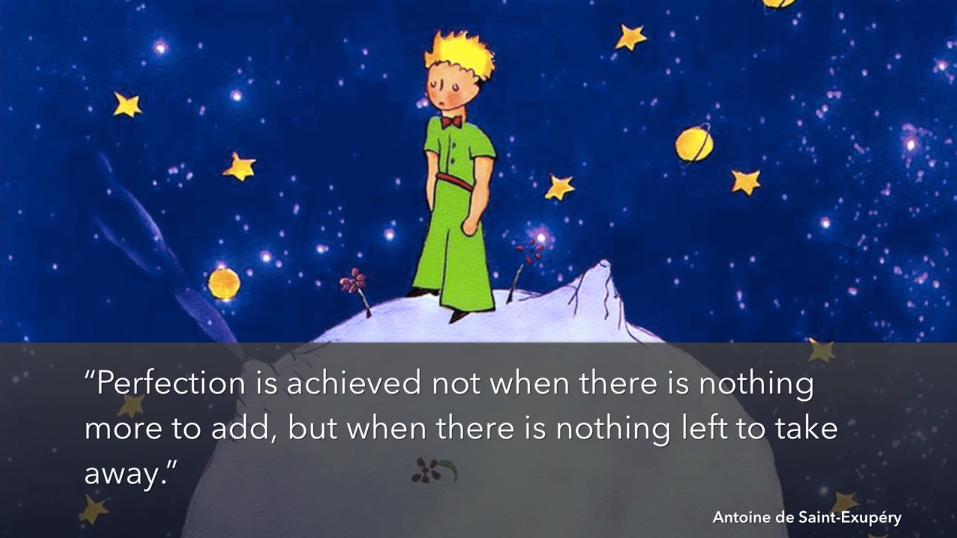
Solve the Right Problem
Most of Balkan’s examples come from Europe, because that’s where he lives and that’s where the Thinking Digital conference takes place, but the States are not spared his gaze. In fact, he finds fault with another train system: San Francisco’s Muni.
In the Muni station, he says, there are signs everywhere saying that what you need is a Clipper ticket.
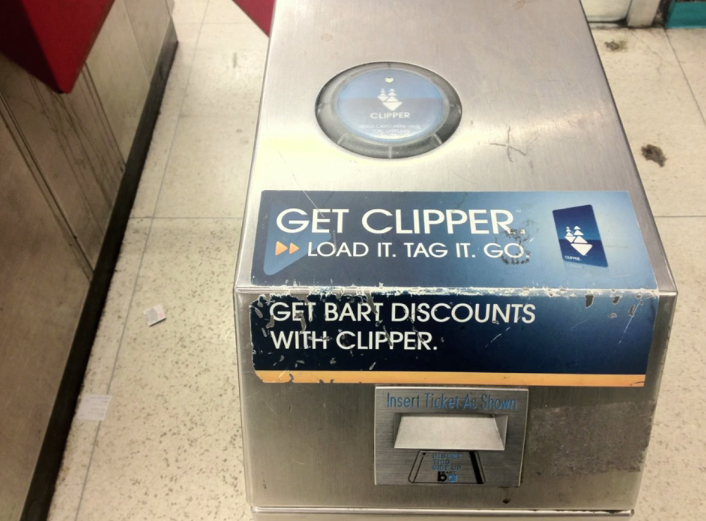
First he buys the wrong ticket because one of the machines says "Clipper" on its scrolling marquee, but it isn’t actually for Clipper. When he locates the right machine, it’s baffling. He finds that in order to buy a Clipper ticket, he needs to know exactly how much the ticket will be for, which requires consulting a posted sign on the wall and remembering the amount. Then once he has put money into the machine, he has to decrease the amount a nickel at a time to get it down to the right payment—from $2 to $1.75, requiring him to hit the button five times.

The design in this system is geared toward solving the system’s problem: selling you a ticket. That’s not your problem as a user, though. You could care less about the ticket. You want to get to a place. That’s your problem, but the system that built this ticketing setup only seems to care about making sure you pay your fare.
The ticket is an implementation detail, he says, when it’s the trip that matters.
Put Design on the Minds of Executives
Balkan warns:
Some of you might be in the tech world, maybe you work on apps, etc. If the first thing you’re thinking is, ‘What’s my database schema going to look like?’ You’re worrying about the wrong problem. You’re worrying about your own problems, not your users problems. And some of you might say, ‘But Aral, what about our business needs?' You know that’s all nice hippy stuff, but what about our business needs? We’re living in the age of experiences. Great design is your business plan.
One of the companies that makes one of these remotes gets that. Can you see which one?
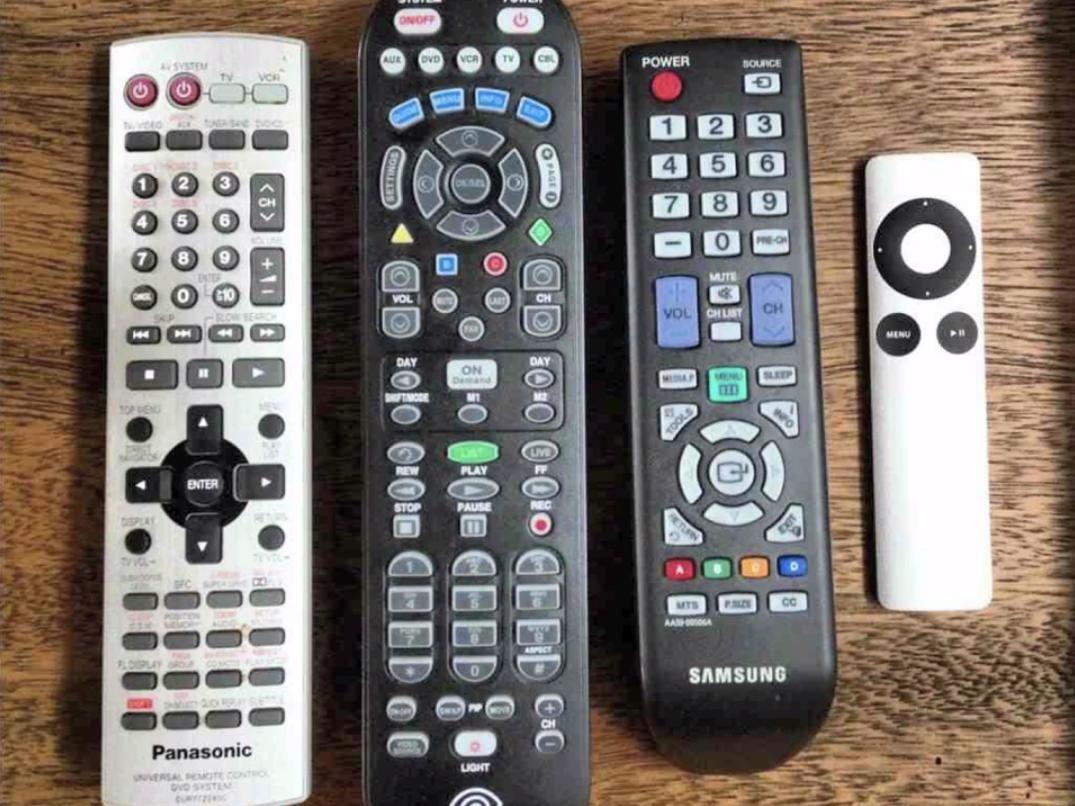
Design results in business success when the people in charge of a product demand a good user experience of the whole team. Apple, the maker of the simplest remote above, proves this to be true. Too often, designers are members of a team making the argument for user experience to the higher-ups. When the higher-ups demand a strong user experience, then products get developed not as a series of engineering problems, but holistically. When design isn’t holistic, it has a way of creating unanticipated problems.
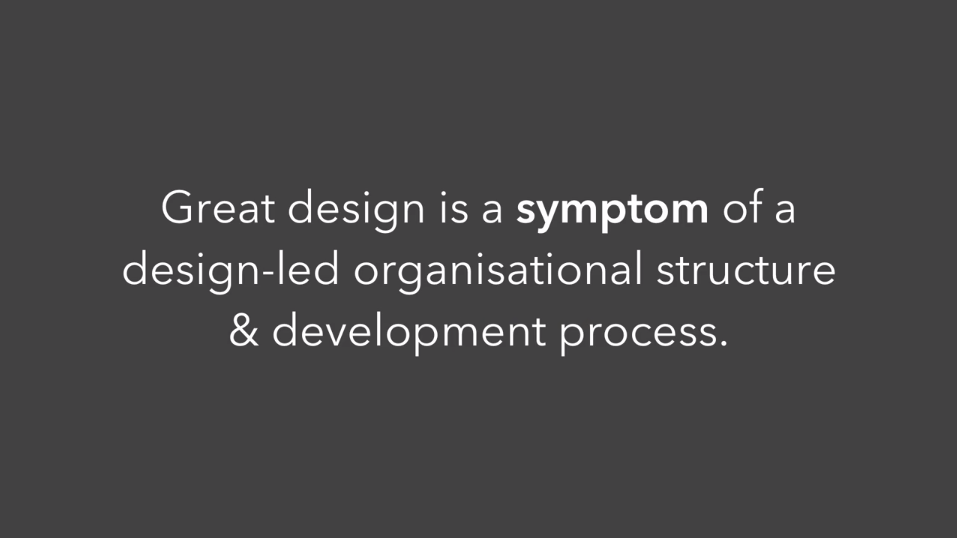
He shows an example of a train he rode on where the first class seats had space for riders to use their laptops. Only, the electrical outlet was set so close to the table that certain bulky laptop chargers couldn’t fit into the outlet because the table got in the way. The table was designed well and the outlet was designed well, but they interacted poorly.

This gets even more complicated with software, where small tweaks on one part of a program can lead to cascading experiences throughout.
Design is Only as Strong as the Weakest Link
When design is holistic, when the whole team is thinking about the whole experience, you catch problems.
Balkan was once given a phone to try by Samsung. This was the first screen he saw when he tried to turn it on:

Whoever wrote the text on that screen could not have been thinking about the whole widget. Honestly, it’s hard to imagine what they were thinking, but maybe somewhere buried deep in the code there is a condition that applies if the phone is off. Whoever wrote it had to be deep in the weeds of some facet of the device and not thinking of the whole device.
Balkan uses this to illustrate that your user experience is only as strong as the weakest part of it.
Design and Development are Inseparable
"Design and development are not two different things" Balkan argues. "Design leads development and development informs design." As a user experience designer, Balkan says he is both designer and developer. They are inextricably linked.
"Design is about a marriage of creative and technical, you cannot separate these two things out. Technical is creative. Creative is technical. This is holistic."
Put another way, Balkan says that maybe the word design has become too precious to really be useful anymore. Maybe we should call it "assumption," he says, because that’s really what designers do. They start with a vision that is an assumption about how people will use a thing. That vision is turned into a design. That design gets tested with real users.
Then, the assumption gets revised based on the test. Repeat.
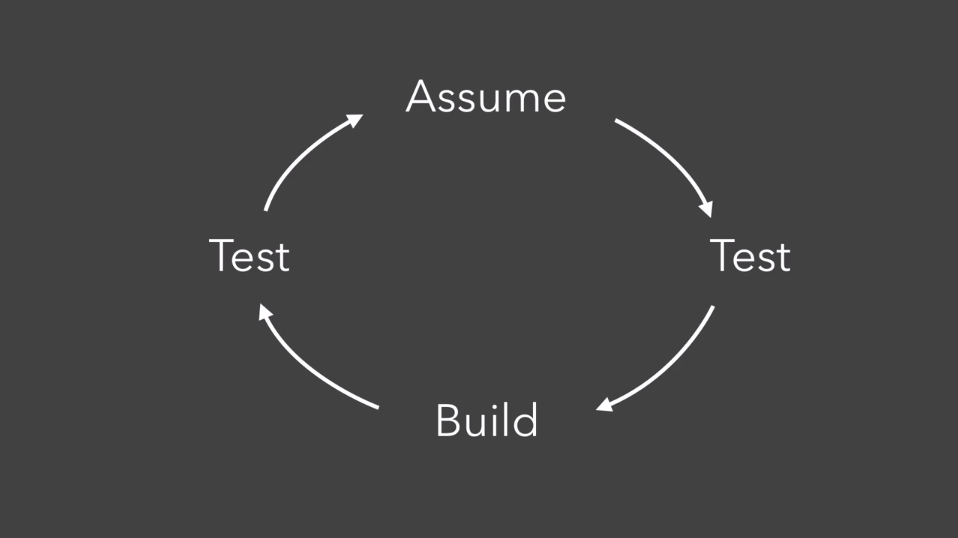
Design Needs Vision
If the top-down approach Balkan's advocating for sounds undemocratic, that’s because it is. Balkan is clear that there is nothing democratic about strong design. Strong user experiences start with vision.
"Unlike what Google would like you to believe, you cannot A/B test your way to great design if you don’t have a vision to begin with," Balkan says, adding neither market research nor users will give you your vision.
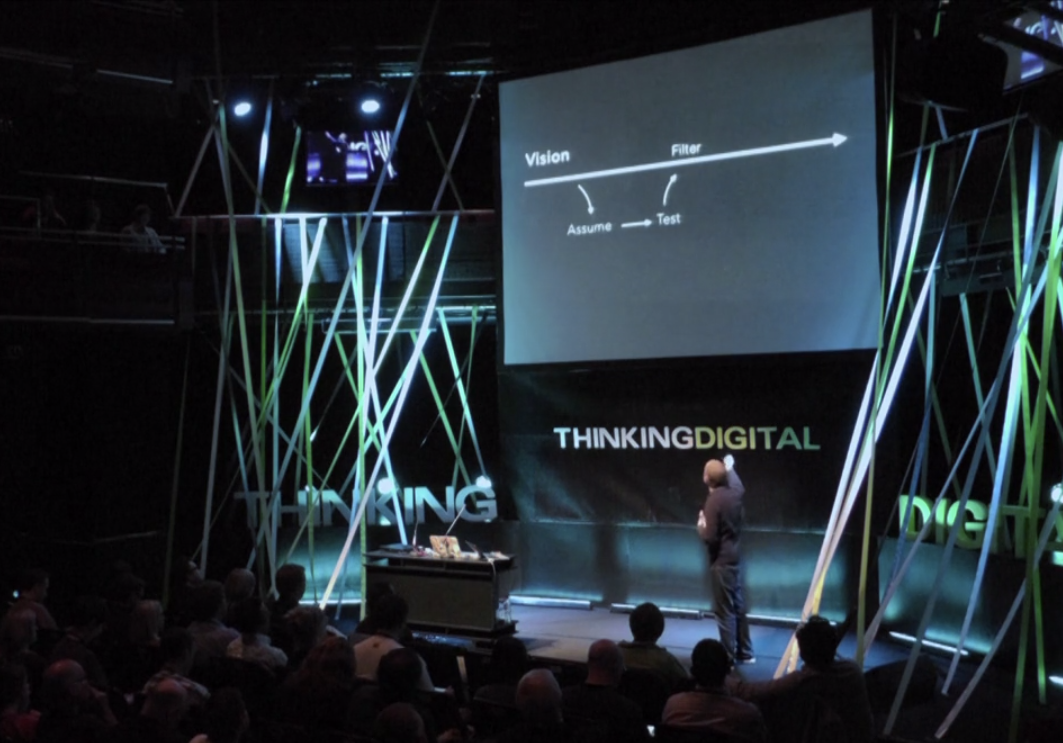
Vision —> Assume —> Test —> Filter
"Everything comes out of this vision. Your assumptions come out of it. When you test stuff, you need to filter that through your vision," he says.
"You don’t just take what everyone tells you. You have to filter it through your vision and then you rinse and you repeat and you rinse and you repeat. And this iterative process is how we make things."
Focus is Essential, too
Balkan shares the story of iDVD, originally told by its founder, Mike Evangelist, in "Fast Company":
He tells the story of how they were going to have a meeting with Steve Jobs. So they came up with all of these wireframes, all these artifacts that we love in design, right? We have this fetish for artifacts in design. Some of us sell artifacts and think that’s design.
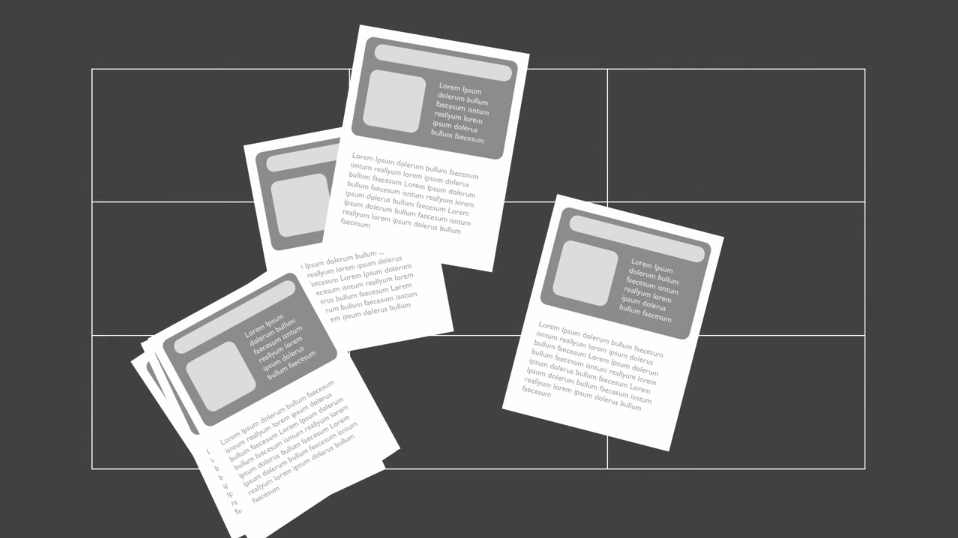
They came up with all these artifacts and the documentation. And he tells the story of how Steve Jobs walked in the room and completely ignored all of that and walked up to the board and drew a rectangle. And said, ‘This is the window.’ And he drew a button, and he said, ‘This is the burn button. And what you do is you drag your video into the window and you press the burn button and you get a DVD and that is iDVD.’ And that’s what I mean when I talk about focus. That’s the sort of focus you need.
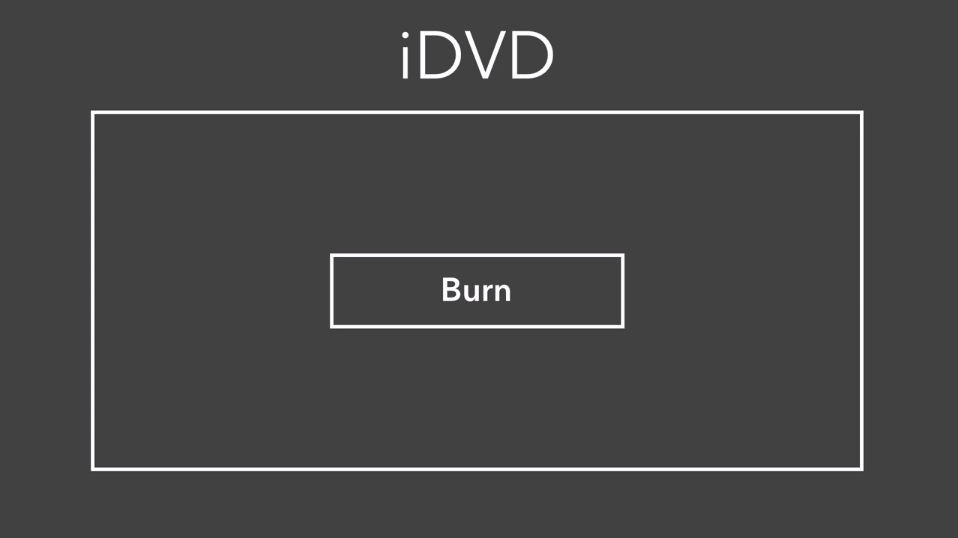
Magic is in the Details
Mistakes made during the product development process can help you get closer and closer to that intuitive, beautiful, maybe even fun design that users will actually love using, as long as you don’t stop too soon.
Good enough is the enemy. "I would say we have a culture of mediocrity. … Mediocrity is big business," Balkan says. He shows an example of the value of getting details right in his first app. It’s an app that allowed you to quickly download a book by scanning its barcode. A problem the app ran into from time to time through no fault of the app, however, was a poor Internet connection.
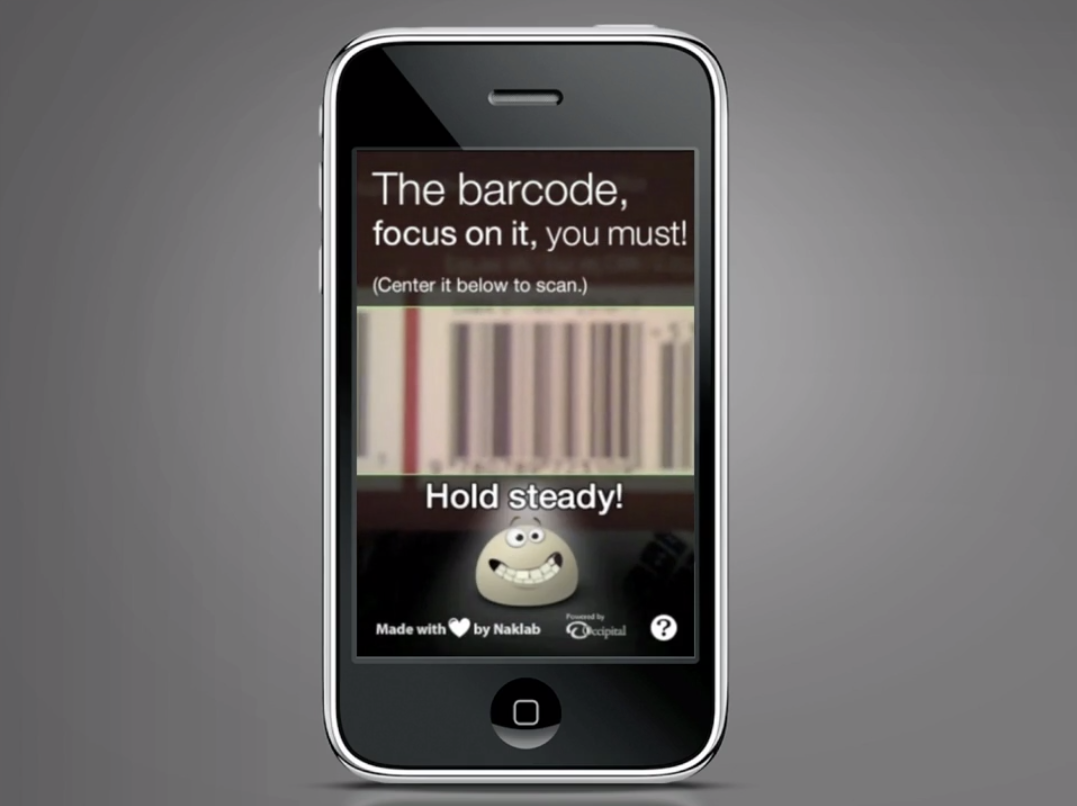
Despite the fact that it’s not the app’s fault, Balkan built in a feature where the app effectively makes a series of jokes about the poor Internet connection to both a) delight the user and b) direct his or her ire to the actual source of the problem. In fact, in that moment of frustration, some thoughtfulness might make users like the app more. Humor can help.
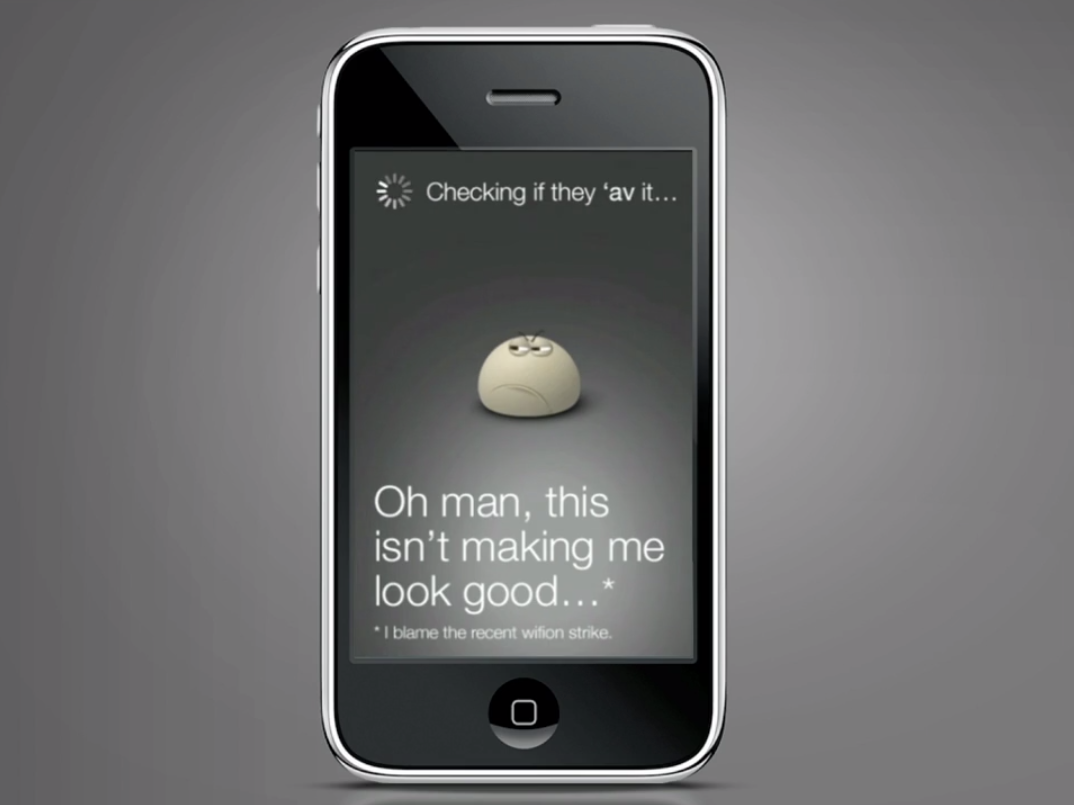
"That doesn’t mean build Clippy into your applications, just so you know," Balkan says. "But it does mean that empathy is one of the most important traits that we have."
It’s thinking through those details in the user’s experience that really makes a difference. He points to another example, a Twitter client he made with its own keyboard built into it. He cared enough about this keyboard to spend two weeks in development time getting the keyboard to work exactly as the phone’s native keyboard. Not close, he says, but exactly, because he knew it would be the keyboard his users were used to.
Build in Humanity Before it’s too Late
Up to this point, Balkan talks about great design by contrasting it with bad design and mediocre design. There’s another kind of design to think about, though: evil design.
If you don’t think it’s important to get humanity into the machines we make, think about just how easy it is to be misunderstood over any sort of machine-aided medium. You lose all the aural and visual cues over machines that we humans find so helpful (yet we still misunderstand each other all the time face to face).
It’s easy to misunderstand each other through machines and even easier to be misunderstood when you are trying to anticipate how someone will understand the thing you made as they are using it when you are nowhere in sight. That’s why it’s worth spending time to insert as much humanity as we can.
"The real danger is not that computers will begin to think like humans, but that humans will begin to think like computers," Balkan quotes former journalist Sydney Harris.
He points out a comment he found from a user that said her favorite thing about Gmail was the way it looked for the word "attached" or "attachment" and warned you if you tried to send an email with that word that didn’t have anything attached. That’s building in humanity.
Don’t Forget What Humans Have Already Learned
Designers that have come before have already taught humans a lot and today’s designers ignore that at their peril. You can’t ignore expectations, as exemplified in this photo Balkan shares on the screen:

Conventions are important. If they have come to work for people, it may not be worth messing with them.
For Every Superhero, There is a Villain
If something isn’t working well enough that a designer thinks some sort of warning is needed, it might be that they need to do more design. If a bathroom only has one control over its faucet and that control only turns it on or off, it’s not enough to put up a sign that says that the water might burn your hand.
A designer should figure out a way to make the water not so hot.

If you need a warning, you probably quit working too early. Or don't care enough to build things that don’t hurt people.
Though there are designs that do hurt people. He calls this evil design. He points to Ryanair, who’s cluttered online booking system at one point asks for your country of origin. It does it in such a way that it might seem like it has something to do with your flight, but the real reason it’s asking you is to add travel insurance onto your ticket price.
Of course if you’re aware of what’s going on, you want to select the "No travel insurance option," and to do so you’ll have to find it buried in a list of countries.

In a way, it’s brilliant design, Balkan says, because they want you to buy travel insurance and it no doubt tricks lots of travelers into doing so, but that’s also what makes it evil.
Designers: Don’t Take Your Responsibility for Granted
In Balkan’s view, the stakes are high. Product teams that take user experience seriously don’t just show respect for you as a customer, they show respect for your life on this planet. Good design respects life itself.
"We all have a tiny amount of time in this world and then we die. And we spend that time having experiences. […] The quality of those experiences, determine the quality of our lives," Balkan says at the end of his talk.
"We as designers, as the people who craft experiences, we have a profound responsibility," he says. "A responsibility to not take for granted the limited time that people have on this earth. A responsibility to make that time as painless, as empowering, as enjoyable and delightful as we can because this is all there is. And it’s up to us to make it better."
You might also enjoy this article: "The Secret Behind MailChimp's Creative Culture, Even As It Grows"
Hat tip Om Malik for video find.
Credits: Video screenshots of Aral Balkan and presentation slides courtesy Thinking Digital via Vimeo. Superhero baby photo courtesy Nick Nguyen via Flickr.





